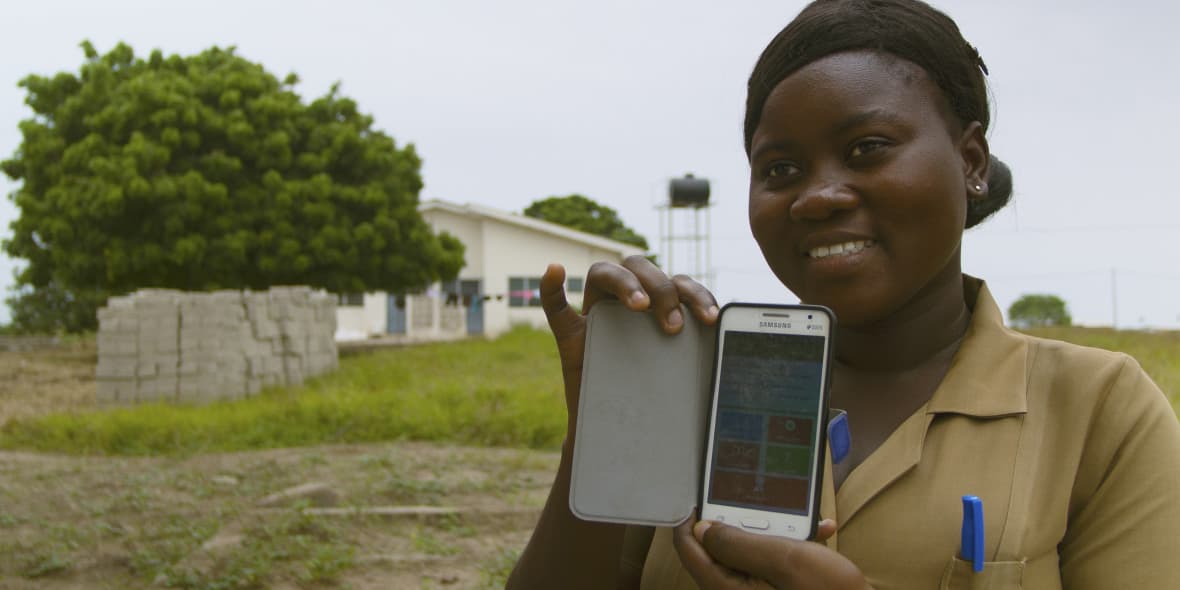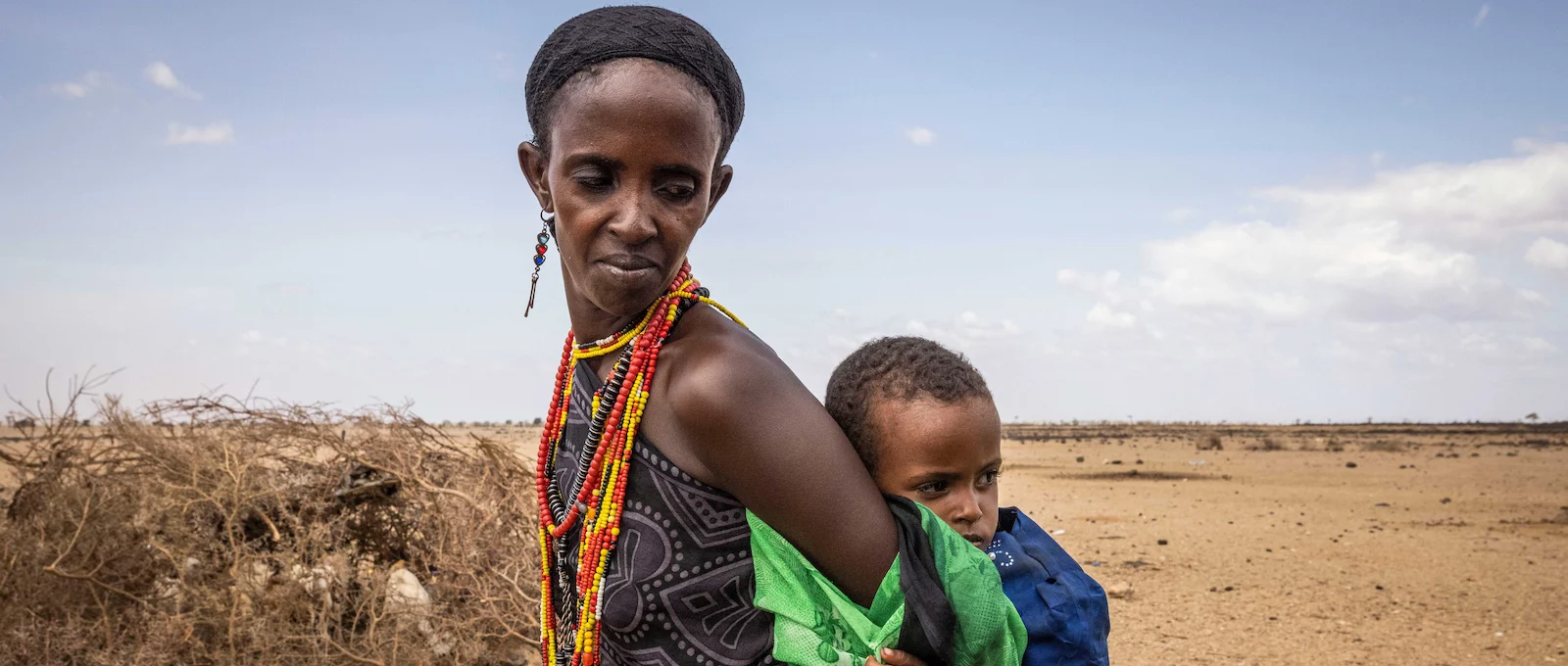When nurse Barbara Senu paid a routine home visit to a young mother and her newborn, both seemed to be doing well. But Senu was concerned about the baby’s umbilical cord stump, to which the mother had applied a mixture of sand and toothpaste. She feared that infection could set in, which can be deadly.
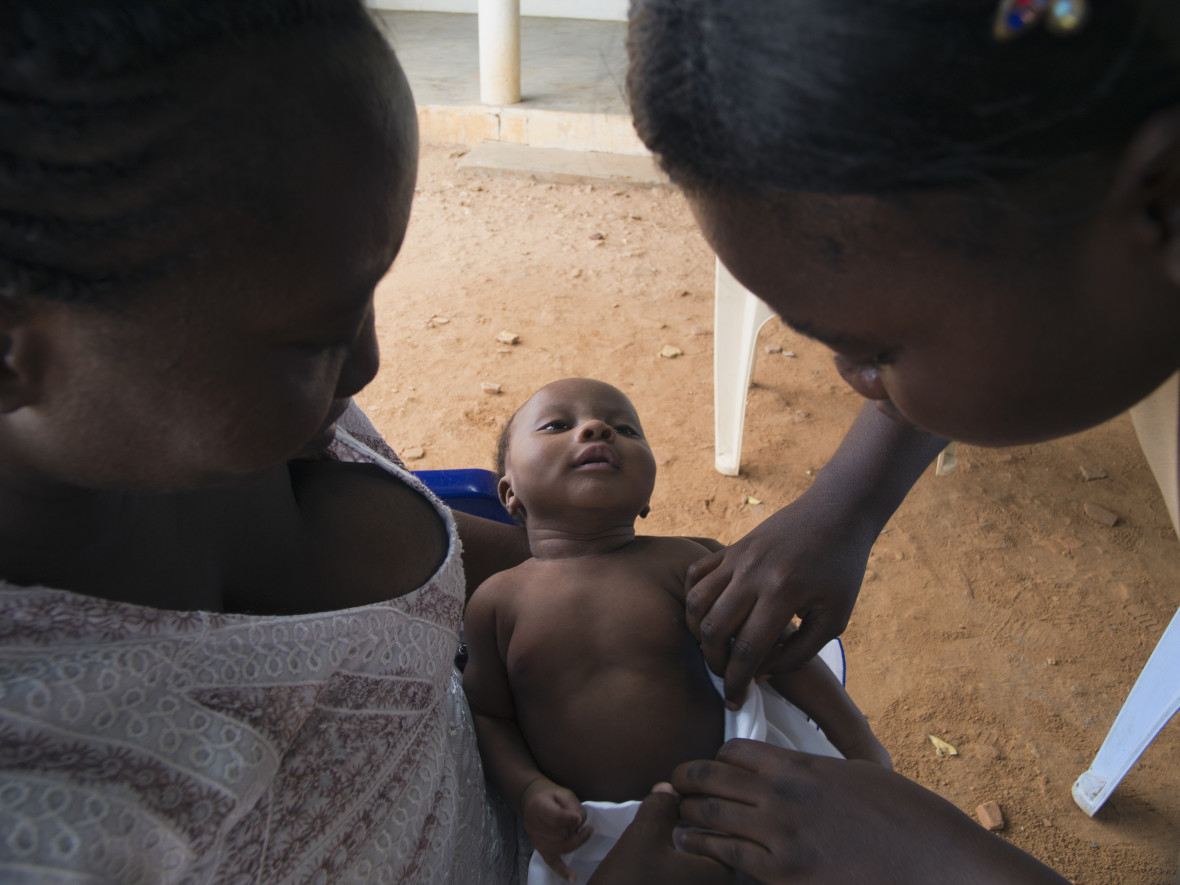
“So I took a video of that and posted it onto the CHN on the Go WhatsApp group,” recalls Senu. “And I was advised to tell the mother not to do that,” she said. Senu gave the mother instructions on proper umbilical cord care.
Working in isolation
Launched in July 2014 as a pilot of Concern Worldwide’s Innovations for Maternal, Newborn & Child Health initiative, CHN on the Go is a smartphone app that is helping frontline nurses like Senu bring better maternal and child health services in hard-to-reach places in Ghana. It is also improving the skills and knowledge of these community health nurses, known as CHNs, and helping them feel less isolated from their supervisors, peers and families located far from their postings. Now, 270 nurses and supervisors in five districts in the Volta and Greater Accra regions are using CHN on the Go.
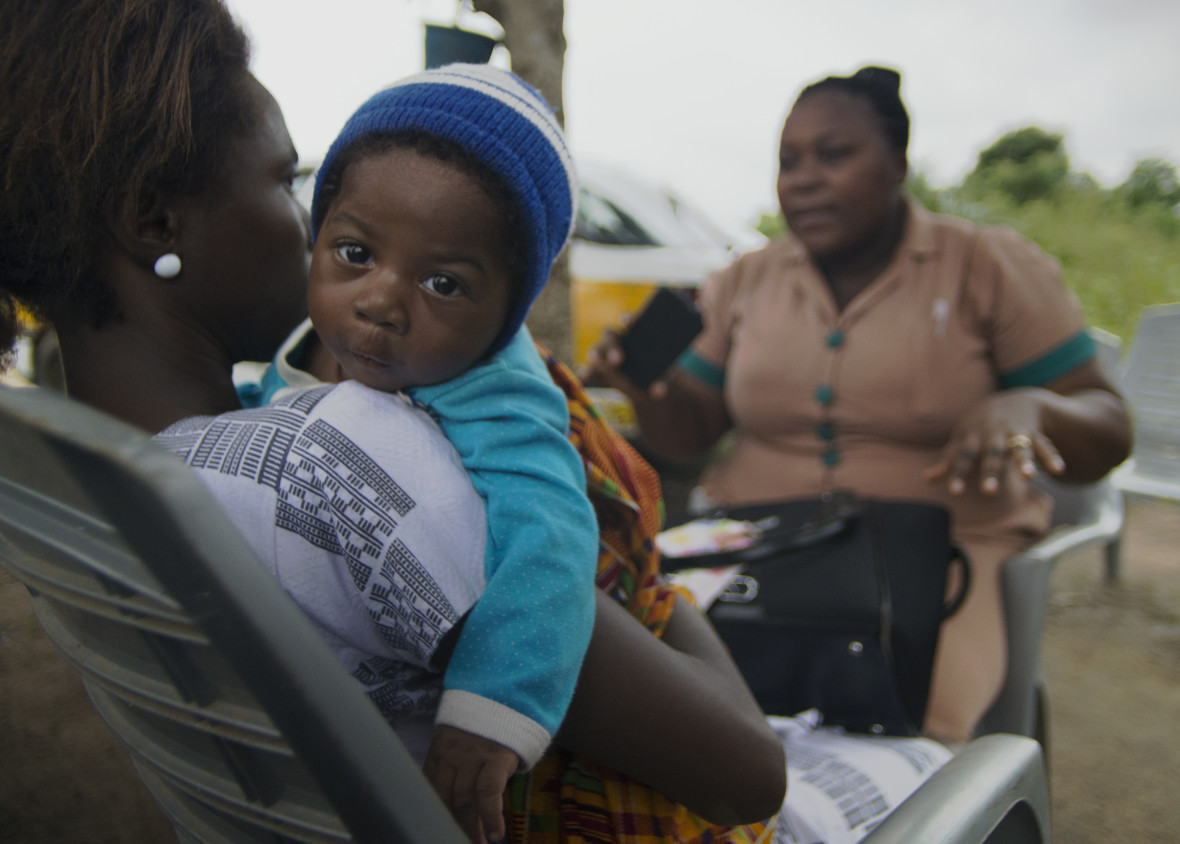
Demotivated and stressed
Often these nurses must walk for hours or travel by motorbike, bicycle and even canoe to get to their clients. They can leave early in the morning and return late at night and visit more than a dozen villages in a month. Once there, they are not always certain of the best course of action for the young mothers and newborns they see. These difficult working conditions, as well as a lack of recognition and potential for career advancement, have made them feel demotivated and stressed, and attrition among CHNs is high.
CHN on the Go gives the nurses much-needed support
“These community nurses were cut off from their peers, from their families,” said Victor Gamado, a field coordinator for Grameen Foundation, Concern’s implementing partner for the project. “They were also cut off from information and their career paths.” Now CHN on the Go is giving them much-needed support.
Well-equipped and well informed
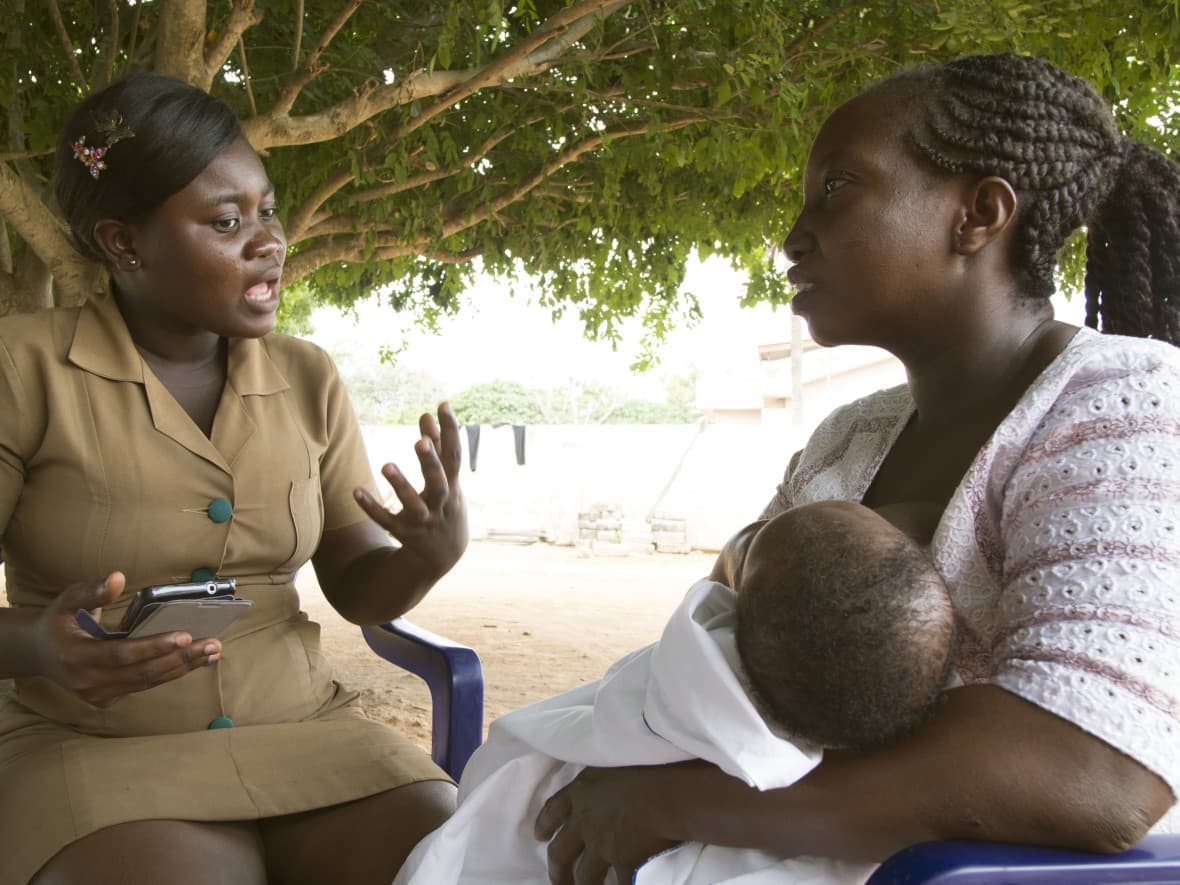
The app’s Point of Care module helps nurses quickly diagnose and treat clients in the field, checking, for example, to see how much malaria medicine to give a child, according to his weight and age. A planner helps them set work targets, such as how many children to immunize in a week, and to organize their days so the vaccines are available. An app developed specifically for supervisors allows them to track the nurses’ activities and progress and give feedback and recognition, leading to better supervision, management and communication.
E-courses enable nurses to increase their clinical knowledge while advancing their education and careers
One of the most popular features is the app’s e-courses. It allows nurses to get credit for the classes they complete and pass, enabling them to not only increase their clinical knowledge but to advance their education and careers, as it’s difficult to leave their jobs to go back to school. The topics range from pregnancy issues to diarrheal disease, a leading killer of children. “Every night I read it at least once or twice,” said one CHN of the eLearning courses.
Better communication
CHN on the Go’s pictures help the nurses to navigate communication issues that sometimes arise, especially since some clients aren’t literate or the nurses can’t speak the local dialect. Georgina Butu, a mother of three, sat with her two-week-old son in her arms, looking at contraception options on the phone as a nurse explained each one. Butu announced on the spot that she wanted a long-lasting implant. She said the phone’s visuals helped her throughout her pregnancy.
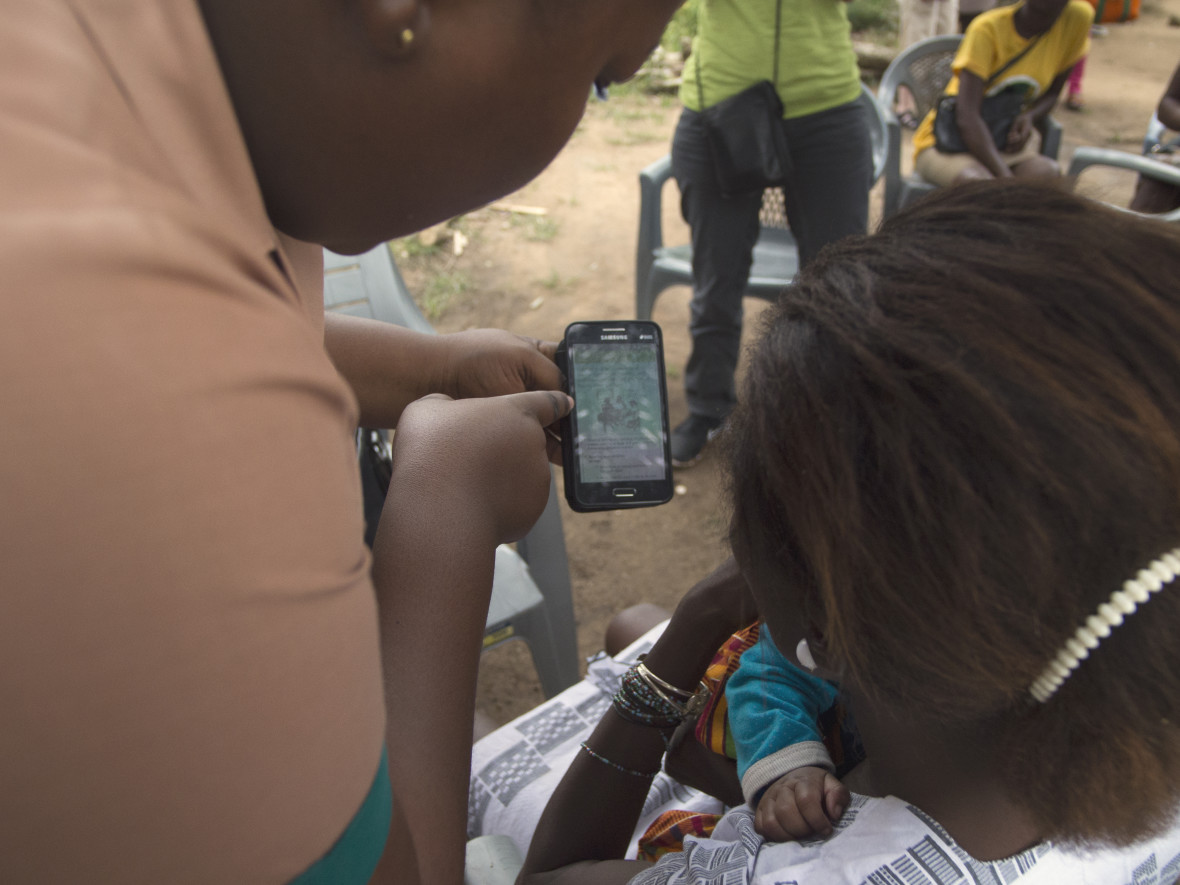
“I think it’s good because I saw for myself all the things that the CHN was referring to,” Butu said. “Things I should eat, danger signs in pregnancy. She took me through all that with her phone.”
Whereas in the past these nurses had to lug heavy visuals on their difficult journeys, all the information they need is now on their phones.
"When they see the pictures, I think they take it seriously"
Once, when a mother was having trouble feeding her infant, “I went straight to my phone,” nurse Valerie McCarthy Vroom said. “I showed her the pictures, the steps on how to express breast milk and she did that. I visited her couple of weeks after and the baby could breast feed now.”
“They say that seeing is believing,” she added, “so when they see the pictures, I think they take it seriously.”
Award-winning user-centered design
One of the most important aspects of CHN on the Go is the central role that nurses and supervisors themselves played in designing the app, ensuring that it meets their needs.
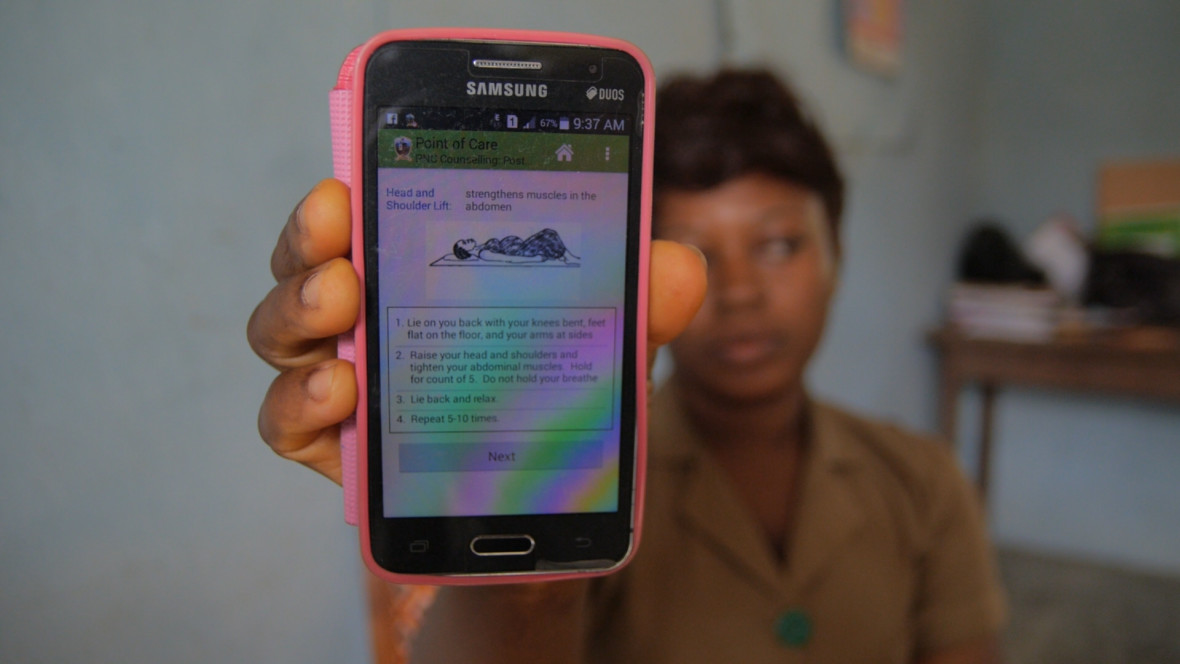
Much time in development was spent with the nurses, understanding how they spent their days, what could help them to do a better job, and how they could be respected and rewarded for the vital work they do.
CHN on the Go won a first place award from the Design Management Institute in 2015
“At each point in time we went back to the community health nurses to engage them and let them know that this is what we are developing based on what we’ve heard from you,” said Concern Program Manager Patricia Porekuu.
In recognition of the value that the app’s user-centered design is bringing to the nurses and their clients, CHN on the Go won a first place award from the Design Management Institute in 2015.
Collaborating with Ghana Health Service
From the outset, CHN on the Go has enjoyed a close collaboration with Ghana Health Service (GHS), an active partner that provided the app’s content. “All of the material in there was based on the relationship with the Ghana Health Service – our protocols, our guidelines, our policies, our training materials, all of those topics,” GHS Regional Director Linda Vanotoo said.

GHS District Director Florence Gyaasi-Nketiah said the nurses are now well equipped. “You can just click on it and everything is there,” she said. “Your confidence is boosted up.”
CHN Valerie McCarthy Vroom agreed. “It increases my confidence a lot,” she said. “I’m very, very proud of what I’m doing as a community health nurse.”

